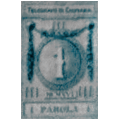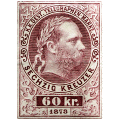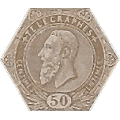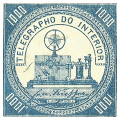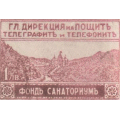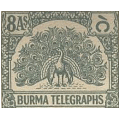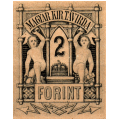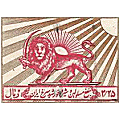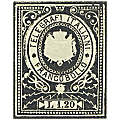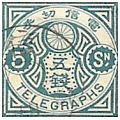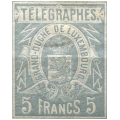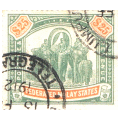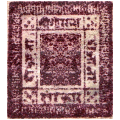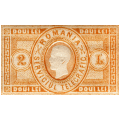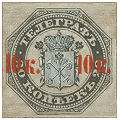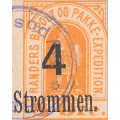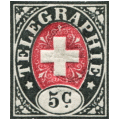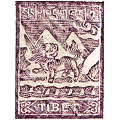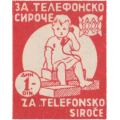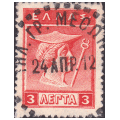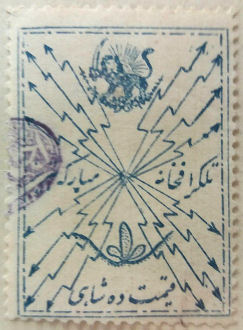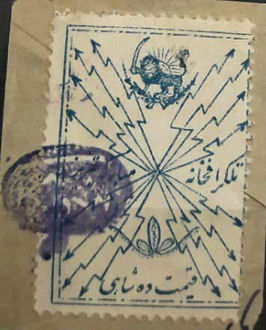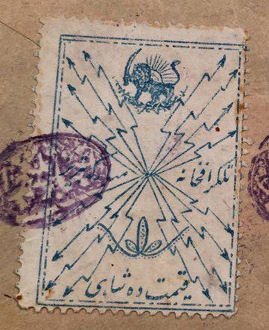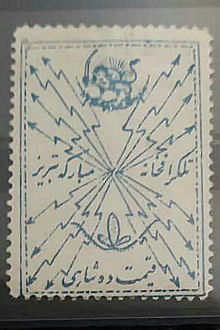| अनुवाद |
Übersetzen sie |
WORKING
|
Traduisez |
ترجم |
| перевести |
Traduca |
Traduzca |
翻译 |
|
Telegraph stamps of the World
Click here for a site-map. |
Select currency. Default = GBP (1.0)
|

I have re-numbered these in the light of new information, though leaving references to the original designations.
I have now brought the prices up to date and added currency selection.
The new designations have 'RH' numbers (Revised Hiscocks) to avoid confusion.
CheckList Setup |
For information on the early Telegraphs in Iran, see IranicaOnline.org
See also iranphilately.org for the Iran Philatelic Study Circle (IPSC, in English).
IRAN (Persia).
Steve Hiscocks wrote in 1982:
A number of classes of stamps have been described as "Iranian (or Persian) telegraph stamps" and the true situation is still not entirely clear. Those listed by Morley in his 1900 catalogue — the postage stamps of 1892 "overprinted" 'TELEGRAPH SERVICE' across three stamps — are certainly not true telegraph stamps as Morley himself recognized in his journal a couple of years later: the "overprint" is a cancellation used on telegraphically used postage stamps. The high value provisional postage stamps of 1902 (10 to 100 tomans) have also been described as telegraph stamps since their values were far too high for postal purposes at the time. I am advised however that they were only used for money orders and have no telegraphic associations. It has also been suggested that the postage stamps current in 1914–15 were overprinted with the year '1914', etc. and used locally as telegraph stamps by the British military but I have been able to find no confirmation of this and Iranian experts disagree. Similarly I have been told that postage stamps (date unknown) were overprinted with a black horizontal line or bar for telegraphic use but again no confirmation has been forthcoming. In the absence of further information I feel it best to exclude all the above.
One class of Iranian 'telegraph stamps' is however not in doubt although it is for the collector to decide whether they should be included in his own collection. These are the charity stamps issued between 1950 and 1976 in aid of a TB sanatorium. There were separate issues for postage (50d) and for telegraphs (2r — 2.5r) and the latter had to be used in sending a telegram. Since they were obligatory I include them in spite of the fact that they did not pay for the telegram. They fall into the same class as those of Portugal, some of those of Spain and perhaps the municipal issues of Puerto Rico.
The designs of these stamps are the same except for the values which appear at the extreme right of the bottom tablet. These may be distinguished as follows:
2r — ٢/ 2r25 — ٢/٢۵ 2r50 — ٢/۵٠ |
My note:
I am less constrained in what information I may include.
I do however try to include as much relevant information as I know of so that collectors can decide what they wish to include in their own collections.
It would seem that earlier charity issues were also obligatory, so I have added information about them.
I have also added information on postage stamps used for telegraphic purposes.
Lastly I have added extensive information on the setting up of the telegraphs in Iran.

In case your Arabic is a little rusty, here are the numbers 0 to 9
Though the Shah of Persia was anxious to improve communications, both within his country and to the outside world, the work was
hampered by several factors. Firstly the route passed through regions having different cultures and languages and secondly localities
distrusted the motives of
the Shah and saw the telegraph as a threat to their level of autonomy, particularly so with the nomadic tribes.
Details of the work done by Ernst Höltzer of Siemens, together with maps can be found in this pdf.
In the north - Tehran( تهران ), Rasht( رشت ), Tabriz( تبریز ), Jolfa( جلفا, then on the Russian border).
In the south - A contract of 1862 between the British and Persian governments was to provide a line from Tehran to Bushire ( بوشهر ) on the Persian Gulf.
This went via Kashan( کاشان ), Isfahan( اصفهان ), Abadeh( آباده ), and Shiraz( شیراز ). Due to problems, this work was taken over by the IETC in spring 1864 (see below)
A branch of the British Government of India, based in London. It was agreed that Iran should build a line stretching from Khanaqin (across the Ottoman frontier from the
Iranian town of Qasr-e Shirin (قصرشيرين)) through Tehran and onward to Bušehr, supervised by a British engineer, Lt. Colonel Patrick Stewart, CB. RE.
The route was: Khanaqin(خانقين), Kermanshah(کرمانشاه), Hamedan(همدان), Tehran(تهران), Qom(قم), Kashan(کاشان), Isfahan(اصفهان), Dowlatabad(دولت آباد), Abadeh(آباده), Dehbid(ده بيد),
Morghab(مرودشت,مرغاب), Sivand(سيوند), Shiraz(شیراز), Dasht-e Arzhan(دشت ارژن), Kazerun(كازرون), Konartakhteh(كنارتخته), Borazjan(برازجان), Bushire(بوشهر).
Dowlatabad gave me some trouble as there are 27 places by that name in Iran. I have marked what seems to be the most likely one.
Completion of their segment through Persia in 1864 completed the Indo-European Telegrafenlinie (short Indolinie).
Due to unreliability of the line with frequent breaks caused by weather and terrain, with long delays for repair, at the end of 1865
it was decided to add another line. This was laid along the route Aleksandrów Kujawski (Poland), Kerch, Julfa, Tehran.
Submarine Cables were laid in the Persian Gulf from 1864, initially from Fao(الفاو), to Bushire(بوشهر), Cape Mussendom(جَـزِيـرَة مُـسَـنْـدَم), Gwadar(گوادر) and Karachi(کراچی),
which connected overland to Bombay (now Mumbai), Calcutta and the rest of India.
The Cape Mussendom connection was on a small island, now called Telegraph Island off the Musandam Peninsula.
In 1868, that section was cut out and diverted instead to go through Henjam Island(جزیره هنگام) and Jask(جاسک) instead.
In 1869 another cable was added from Bushire to Jask. A further cable from Jask to Muscat(مسقط) was laid in 1901.
A list for 1910 shows a Government Radio Telegraph installation at Jask that is not in the 1906 list.
The Indo-European Telegraph Company, was owned and operated by the Siemens Company.
Siemens had a concession from 1868 to 1925 to build and operate a line from Tehran to the Russian
border town of Tiflis (now Tbilisi), from where it continued on to Poti, Kerch, Odessa, Warsaw, Thorn, Berlin, Hamburg and London.
Tehran was already connected to the lines of the Government of India, via Isfahan, Bushire, Gwadar, Karachi and Bombay.
On April 12, 1870, messages could
be sent from London to Calcutta in 28 minutes.
Some good detailed maps can be found at mapsland.com. Spellings of place names differ.
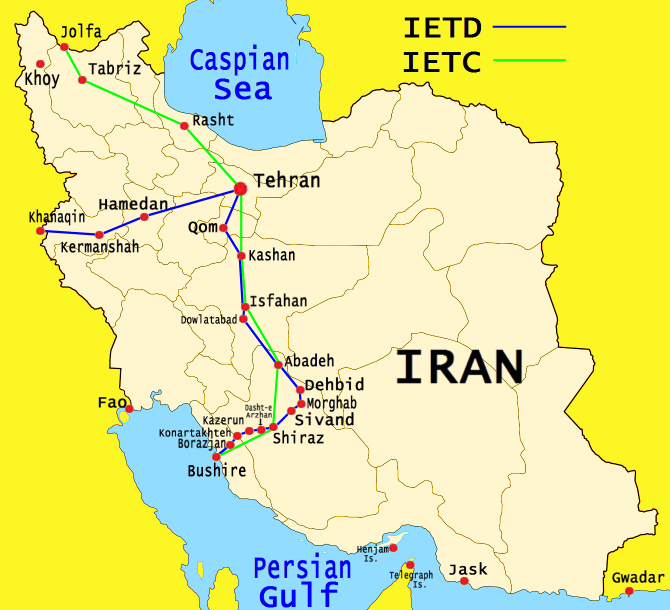
TELEGRAPH SERVICE
Stamps are known with the words 'TELEGRAPH SERVICE' across them at any orientation in black or dark blue.
It has been suggested that this is part of a security overprint of the Indo-European Telegraph Company.
This handstamp is mentioned by Steve Hiscocks, who also mentions that Walter Morley included these in his 1900 catalogue.
Rolf Lamprecht tells me that the company in Iran was called "INDO-EURÖPÄISCHE TELEGRAPHENGESELLSCHAFT".
It is generally agreed that this is a cancel used on postage stamps paying for Telegraph Services.
However, it has to be asked, if these were cancels, why do so many stamps need an additional cancel ?
Perhaps it would be more accurate to describe them as a cachet.
I have seen a photocopy of a cover, from Iran to the Telegraph Department in Calcutta bearing an 1891 10Ch stamp, with هندوستان (India) in the top-right corner.
This has 'TELEGRAPH SERVICE' diagonally across the stamp, with an additional oval Iranian cancel, so this may be standard practice on Telegrams.
It is possible that these were like the roller overprint used on Costa Rican stamps. Both those and these can have different parts of two overprints.
These are known on stamps of 1891 and 1894 series. It would be interesting to know what they did before and after these.
1891 Perf. 10½ or 11½.
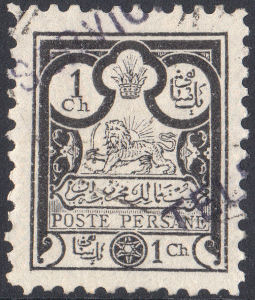 |
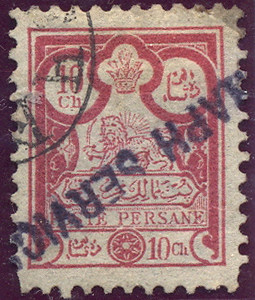 |
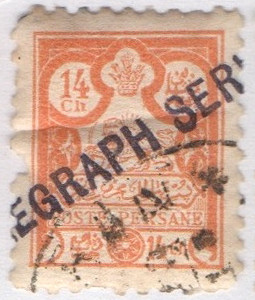 |
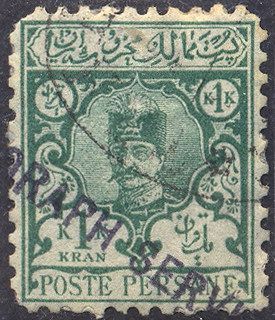 |
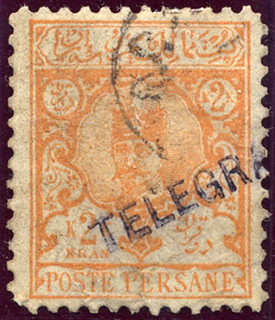 |
| Type TS1 (RH-S1) 1ch Perf. 11½ |
Type TS1 (RH-S5) 10ch Perf. 11½
Courtesy of Rolf Lamprecht |
Type TS1 (RH-S6) 14ch Perf. 10½
Courtesy of Les & Paul Bottomley |
Type TS2 (RH-S7) 1k Perf. 10½
Courtesy of Rolf Lamprecht |
Type TS2 (RH-S8) 2k Perf. 11½
Courtesy of Rolf Lamprecht |
| RH # |
Type |
was |
1891 Description |
Seen |
Mint |
Used |
| RH-S1 |
TS1 |
- |
1ch black |
3 |
- |
- |
| RH-S2 |
TS1 |
- |
2ch brown |
1 |
- |
- |
| RH-S3 |
TS1 |
- |
5ch deep blue |
1 |
- |
- |
| RH-S4 |
TS1 |
- |
7ch grey |
1 |
- |
- |
| RH-S5 |
TS1 |
- |
10ch rose-carmine |
2 |
- |
- |
| RH-S6 |
TS1 |
- |
14ch orange |
3 |
- |
- |
| RH-S7 |
TS2 |
- |
1k green |
3 |
- |
- |
| RH-S8 |
TS2 |
- |
2k orange |
1 |
- |
- |
| RH-S9 |
TS2 |
- |
5k ochre yellow |
1 |
- |
- |
| Currency: |
Pre-1925
5 Dinars = 1 Chahi.
20 Chahis = 1 Kran.
10 Krans = 1 Toman. |
|
Post-1925
1 Rial = 1 Kran
100 Dinars = 1 Rial
10 Rials = 1 Toman |
1894 - Low denomination Perf. 12½. High denomination Perf. 11½ x 11.
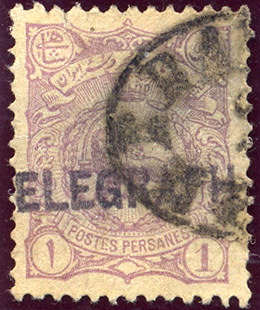 |
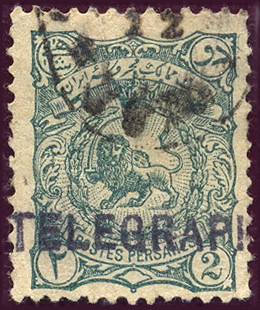 |
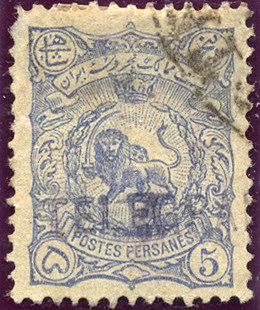 |
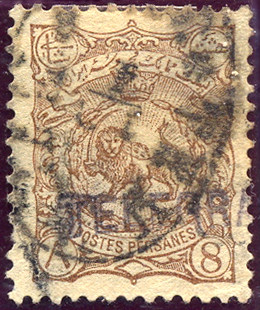 |
Type TS3 (RH-S10) 1ch Perf. 12½
Courtesy of Rolf Lamprecht |
Type TS3 (RH-S11) 2ch Perf. 12½
Courtesy of Rolf Lamprecht |
Type TS3 (RH-S12) 5ch Perf. 12½
Courtesy of Rolf Lamprecht |
Type TS3 (RH-S13) 8ch Perf. 12½
Courtesy of Rolf Lamprecht |
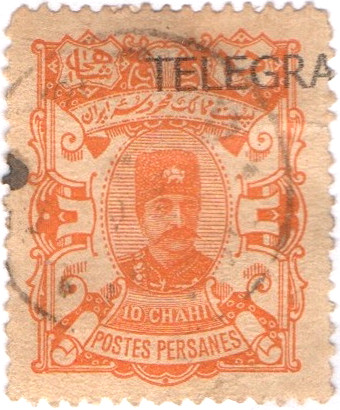 |
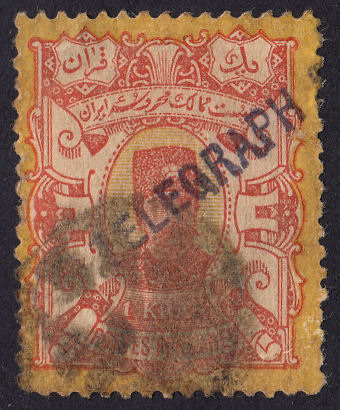 |
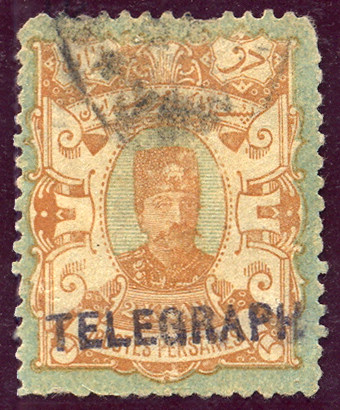 |
Type TS4 (RH-S14) 10ch Perf. 11½ x 11
Courtesy of Les & Paul Bottomley |
Type TS4 (RH-S16) 1k Perf. 11½ x 11 |
Type TS4 (RH-S17) 2k Perf. 11½ x 11
Courtesy of Rolf Lamprecht |
The handstamp on RH-S14 is clearly different to the usual (rubber) handstamps.
It may be a steel handstamp, perhaps used later and/or at a different location.
| RH # |
Type |
was |
1894 Description |
Seen |
Mint |
Used |
| RH-S10 |
TS3 |
- |
1ch lilac |
1 |
- |
- |
| RH-S11 |
TS3 |
- |
2ch blue-green |
1 |
- |
- |
| RH-S12 |
TS3 |
- |
5ch ultramarine |
1 |
- |
- |
| RH-S13 |
TS3 |
- |
8ch brown |
1 |
- |
- |
| RH-S14 |
TS4 |
- |
10ch orange |
3 |
- |
- |
| RH-S15 |
TS4 |
- |
16ch rose |
1 |
- |
- |
| RH-S16 |
TS4 |
- |
1k red and yellow |
3 |
- |
- |
| RH-S17 |
TS4 |
- |
2k brown-orange & pale blue-green |
2 |
- |
- |
| RH-S18 |
TS4 |
- |
5k violet-blue and silver |
0 |
- |
- |
| RH-S19 |
TS4 |
- |
10k red and gold |
0 |
- |
- |
| RH-S20 |
TS4 |
- |
50k green and gold |
0 |
- |
- |
Tabriz Telegraph Stamp.
There is some uncertainty about the usage of this item.
the words 'Gheimat Dah Shahi' ( قیمت ده شای ) are written in Farsi in the lower part of the stamp, it translate to 'Price Ten Shahis'.
Anyone attempting to read these would be well advised to start with Nastaʿlīq script.
I would be really interested to know the results.
The images below are taken with a camera. There is some distortion and I do not know the scale.
Images provided by Behruz Nassre of the Iran Philatelic Study Circle (IPSC, in English). Many thanks Behruz.
There is significant difference in detail between these. It looks like each was individually drawn.
It would be interesting to know how many were in the sheet and what the perforation was.
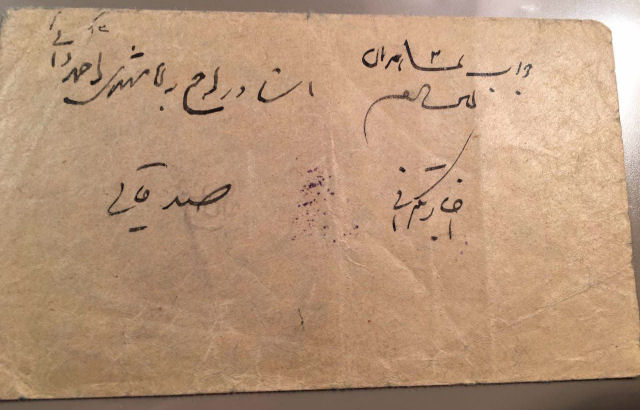
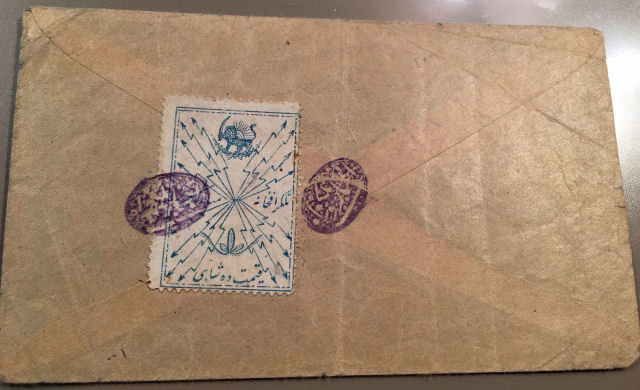
John Barefoot also illustrates these, though with a different cancel.
I am told that the cancel on these reads "News and Telegraph" and that it was probably the telegraph office's cancellation mark.
John stresses that the stamp was used like a seal (in the Western sense), but it was not unusual to put stamps on the back as an additional security measure.
The thing that intrigues me, is that the fee is normally paid by the sender and the stamp affixed to the originating form that stays at the sending office.
These stamps are affixed to the delivery envelope. I would be really interested to know the usage of these !
| RH # |
Type |
was |
Description |
Mint |
Used |
Used on envelope/form |
| RH1 |
TT |
- |
10ch blue |
- |
- |
- |
Iran issued charity stamps from 1918 to 1921, and again from 1950 to 1976.
Steve Hiscocks knew about the second period, and Since their use with telegrams was obligatory, he included them.
However, at least some of the earlier series were also obligatory for sending telegrams, I will include them also.
1918 to 1921 series:
The information and images for these come from Behruz Nassre of the Iran Philatelic Study Circle (IPSC, in English).
Behruz recommends a Revenue catalogue of Iran that he says lists all the telegram related stamps. Details:
"Revenue Stamps of Iran", by Baharaeen & Brooks, 2003
ISBN-10 0972825304
ISBN-13 9780972825306
EAN: 9780972825306
1918/9 issue - Tehran.
During World War I, following drought and poor harvest in 1917, there was a lot of hardship in Iran.
The area worst hit was the North-West of the country around Rasht, Khoy and Tabriz.
To raise money for relief efforts, Tehran placed a tax of 1 chahi on post cards, domestic letters, parcel post and telegrams.
This was obligatory in Tehran. Foreign letters were exempt, but the tax was also levied on legal documents with a variable, calculated rate.
Hamadan city made plans to do the same, but they were not implemented.
A one chahi revenue stamp was used for Telegrams. They were the 1915 coat of arms revenue issue, printed by Majlis Press,
and pre-cancelled before affixing to the receipts. There were additional values for other purposes.
The stamps were perforated 11½, with a frame size of 20 x 29.5mm. They were, at least initially, handstamped with "Charity Usage" (Masaaref Kherieh) in Farsi.
Recorded Usage:
| Stamp | Handstamp | From | To |
|---|
| Revenue | Type a | 21 Feb. 1918 | 19 Jan. 1919 |
| Revenue | None | 9 Jan. 1919 | 8 Mar. 1919 |
| Revenue | Type b | 27 Jan. 1919 | 11 April 1919 |
| Postage | None | 30 Mar. 1919 | 26 May 1919 |
Telegrams could use either revenue or postal stamps.
Handstamp types are shown below.
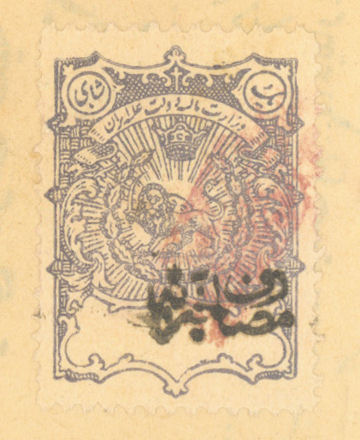 |
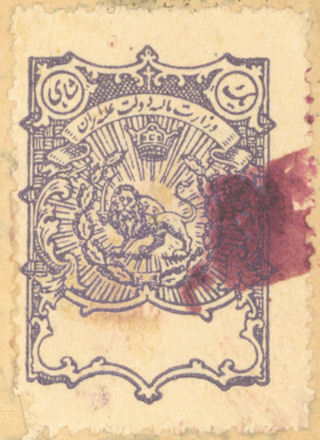 |
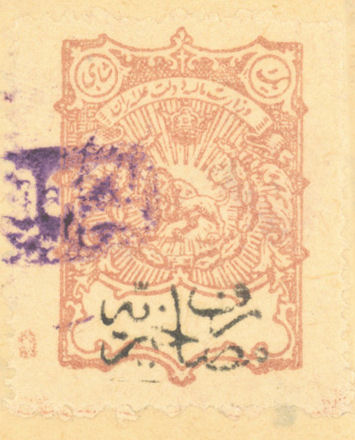 |
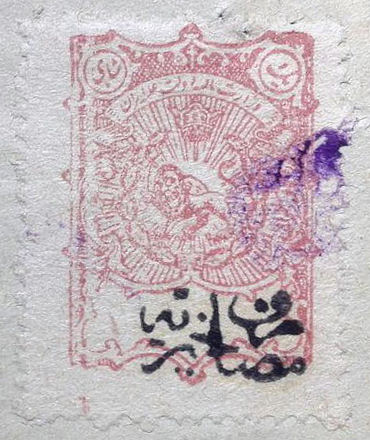 |
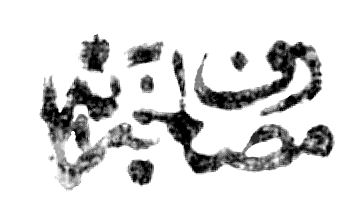 |
For a short while, no hand stamp was used, then
the new type was used on the new colour of stamp.
The stamps seem to take on the colours
of the receipts.
Or perhaps they both become subject to 'aging'. |
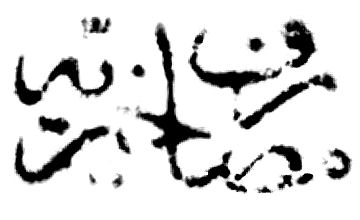 |
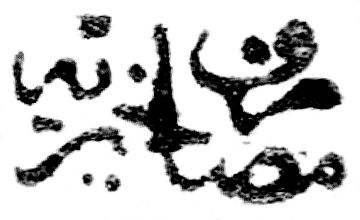 |
| Type a on the 1ch violet. |
No hand stamp. |
Type b on 1ch brown-orange |
Type b, as last but on a white receipt. |
These were stuck on the back of the telegraph receipts. Since they were pre-cancelled, they are not tied.
(Images half normal size.)
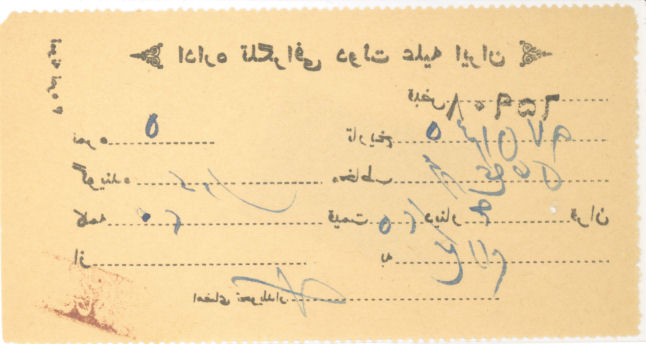
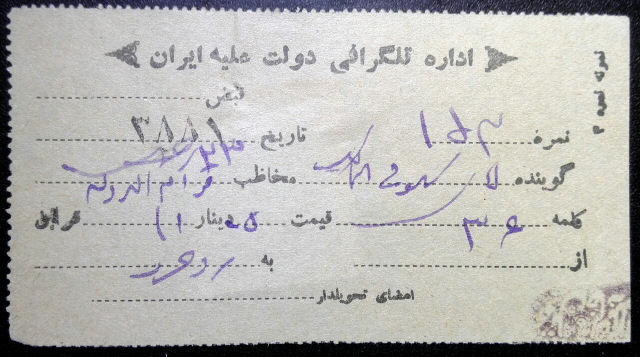
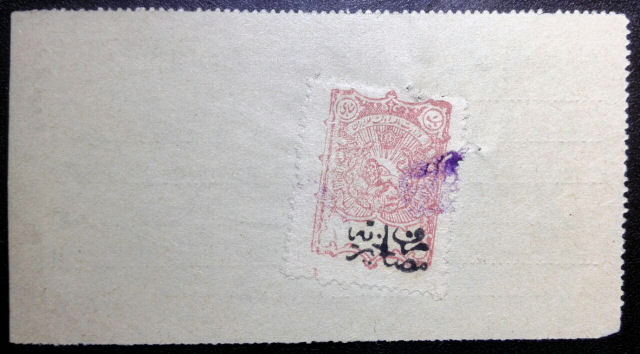
| RH # |
Type |
was |
Description |
Mint |
Used |
Used on Receipt |
| RH2 |
TR |
- |
1ch Violet, Type 1a handstamp |
- |
- |
- |
| RH2a |
|
- |
No handstamp. |
- |
- |
- |
| RH3 |
TR |
- |
1ch Brown-orange, Type 1b handstamp |
- |
- |
- |
| RH3a |
|
- |
No handstamp. |
- |
- |
- |
1918-21 issue - Tabriz.
On the withdrawal of Turkish occupying forces in late October 1918, a tax was levied to help infirmaries and orphanages.
The stamps were in sheets of 25, perf. 11½ with writing in Farsi meaning "Infirmaries and orphanages of Tabriz"
in the top two lines, followed by the value in digits, then the value in words.
Varieties of the 2ch include
١٠٠ missing and the ١ inverted.
Recorded Usage 28 October 1918 to 20 March 1921:
| Usage | Tax Rate | Marked |
|---|
| Post Card | 1 chahi (50 dinars) | ٥٠ |
| Domestic Letter | 1 chahi (50 dinars) | ٥٠ |
| Foreign Letter | 1 chahi (50 dinars) | ٥٠ |
| Parcel Post | 2 chahis (100 dinars) | ١٠٠ |
| Telegraph | 2 chahis (100 dinars) | ١٠٠ |
| Legal Document | 2 or 3 chahis (100, 150 dinars) | ١٠٠ or ١٥٠ |
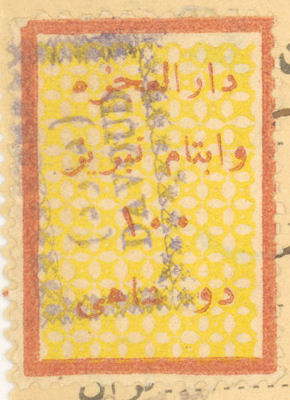 |
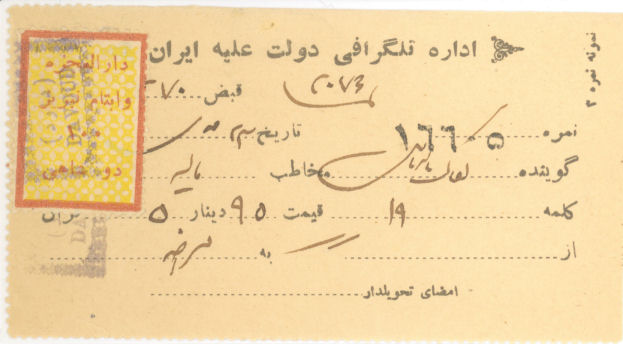
Half size receipt. |
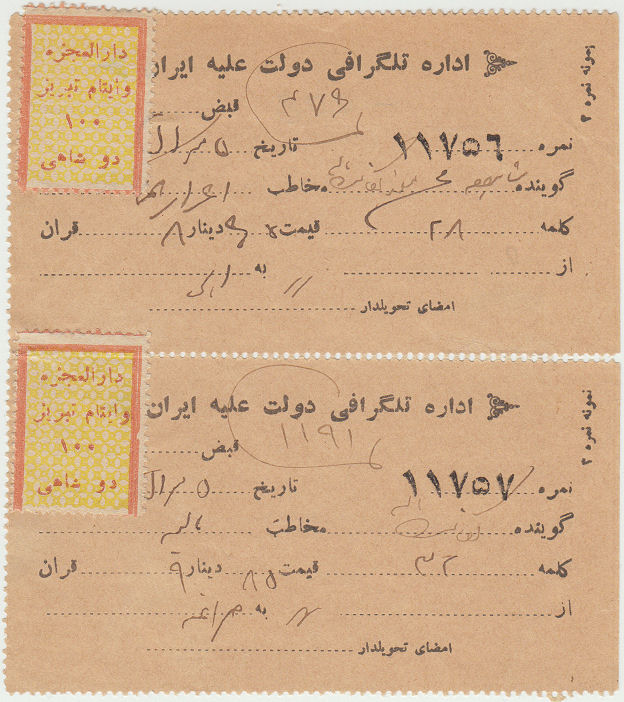
Here is a consecutive pair of receipts numbered 11756 and 11757. It can be seen that they were not cancelled.
| RH # |
Type |
was |
Description |
Mint |
Used |
Used on Receipt |
| RH4 |
TC |
- |
100d red and yellow |
- |
- |
- |
| RH4a |
|
- |
١ inverted. |
- |
- |
- |
| RH4b |
|
- |
١٠٠ missing. |
- |
- |
- |
1950 to 1976 issue.
Red Lion and Sun stamps:
This section is largely derived from the 2023 catalogue in this (2.88MB) PDF document.
All of these before 1976 were in sheets of 100 (10 x 10).
The 2.25r (until 1962) and 2.5r (after) were used in sending telegrams. Steve Hiscocks also listed the 2r value,
but I understand from
Werner Lade
that the 2r was normally used for parcels, with the 0.5 r being used for registered letters.
However, since the correct stamps were not always available, mixed frankings using the 2r and 0.5r values were sometimes needed.
They were usually affixed to the backs of carbon-copies of the telegraph receipt books kept in the telegraph offices.
From March 1950 (Persian year 1329) a tax was levied on registered letters(50 Dinar, or ½ Rial), parcels(2 Rials) and telegrams(2.25 Rials, rising to 2.50 Rials in 1962).
The design portrays the "Red Lion and Sun", Iran’s Red Cross organisation at the time.
This organisation and Tuberculosis Aid were beneficiaries of the Tax.
These stamps were in use until June 1980, when the "Red Lion and Sun" became the "Red Crescent Iran".
Since the 2.5R stamp was not always available, a 2R + 50d or five 50d stamps were sometimes used instead.
In principle therefore, all values were sometimes used for telegraphs, I will list them all.
As always, it is for the individual to decide what to collect.
Listed by Scott as RA1-RA11.
The early issues have 7 or 8 lines to each 'sunray' in the design. From 1976 there were only 5:
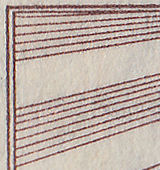
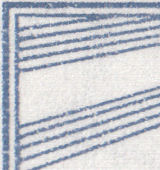
A comparison of the top-left corners. Note that the new design is a bit larger.
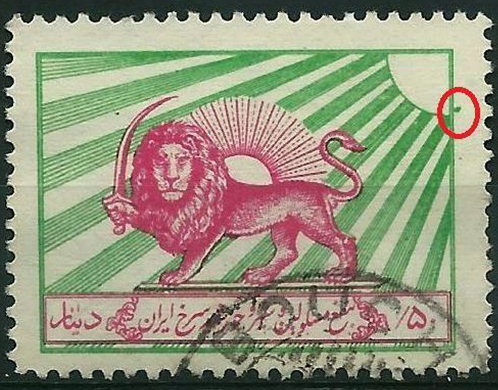
RH5 with plate flaw at top-right. |
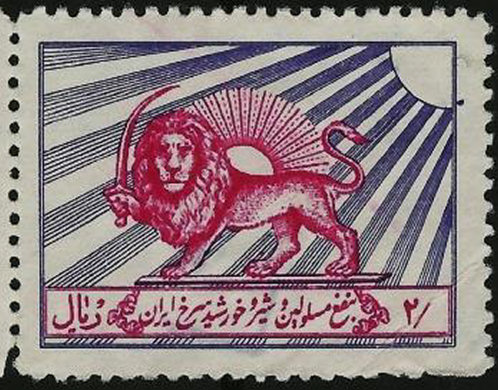
RH6 with plate flaw at top-right. |
↓
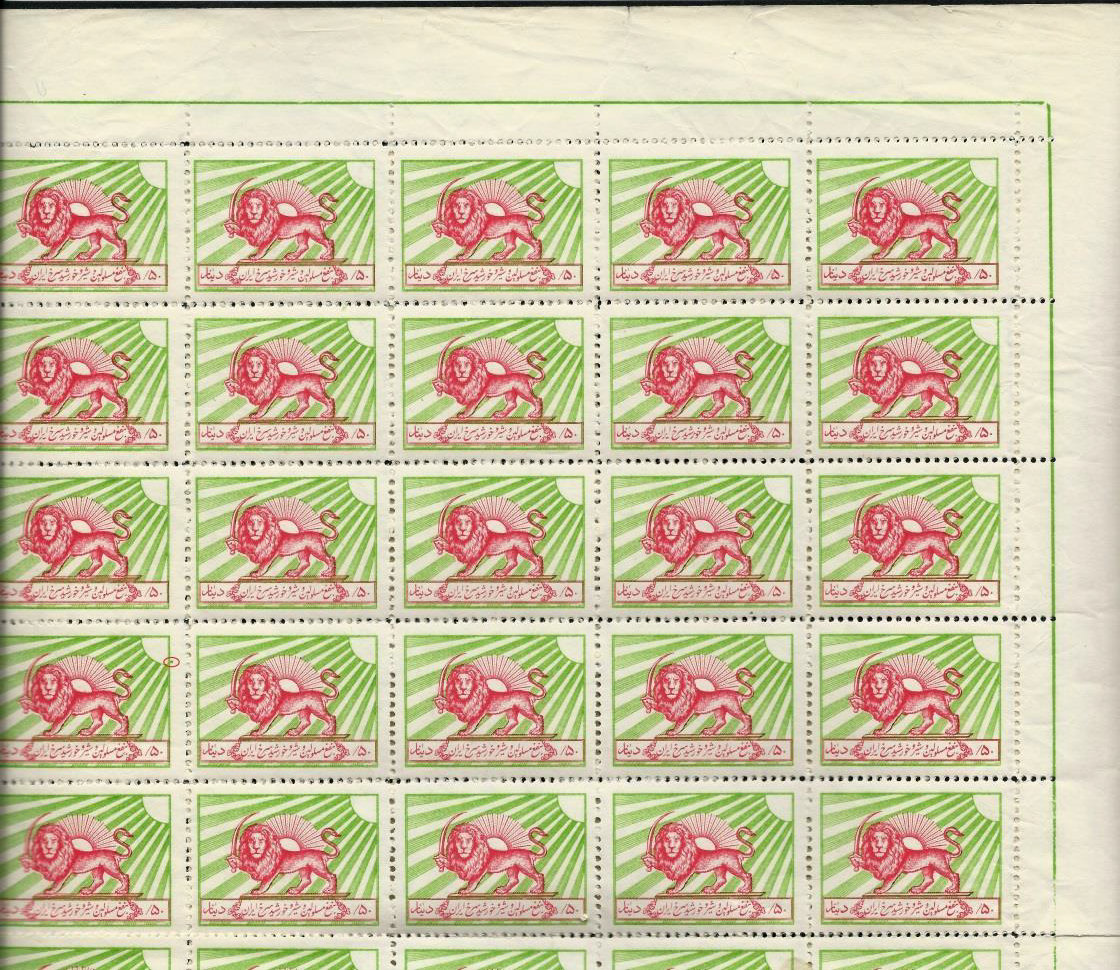
↑ |
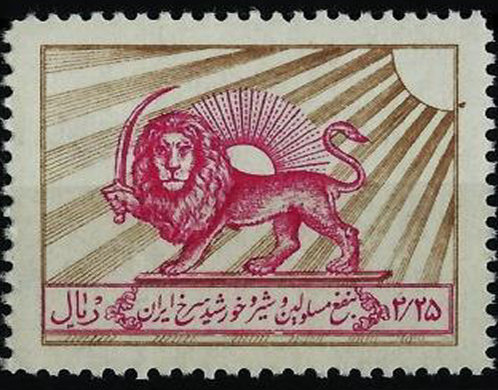
RH7 with plate flaw at top-right. |
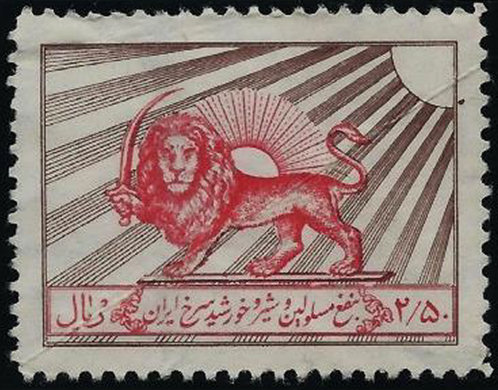
RH16 with plate flaw at top-right. |
There is a constant flaw on the 6th stamp of the 4th row up until the 4th issue of 1963. It is not on the 5th issue, implying a new Sun plate. Images courtesy of Werner Lade.
1st issue - 1950 (26 March) Offset Litho. White wove un-watermarked paper. Perf. 11. Sheets of 100.
The gum was applied with a brush, so is uneven.
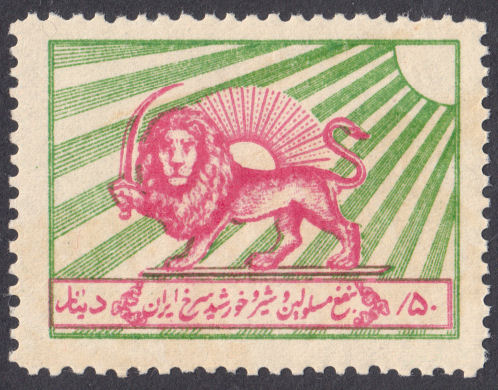 |
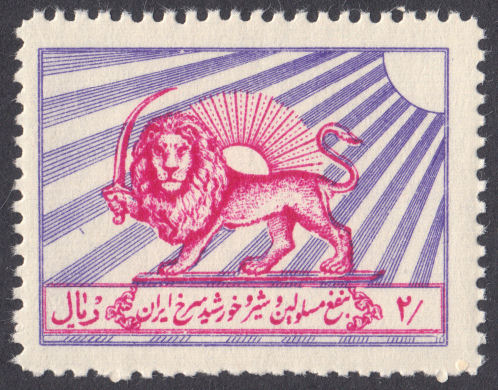 |
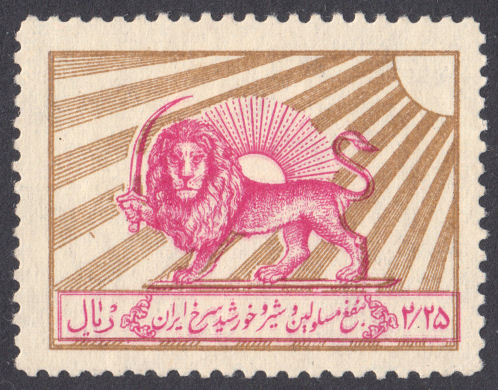 |
| Type RL1 - RH5 50d (but marked /۵٠ instead of ۵٠) |
Type RL1 - RH6 2r ٢/ |
Type RL1 - RH7 2r.25 ٢/٢۵ |
The two high values are marked on the left as being in Reals, with the value correctly marked on the right. For the 50d though, it is marked on the left as being in Dinars, but incorrectly on the right as .50 instead of 50.
This was not corrected until somewhere around 1965-7.
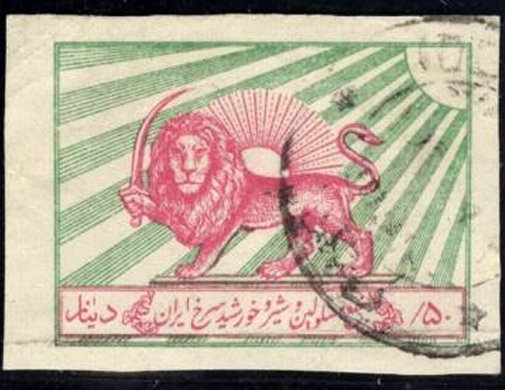
RH5a courtesy of Werner Lade. |
|
| RH # |
Hisc. |
Type |
1950 Description |
Mint |
Used |
Used on Receipt |
| RH5 |
- |
RL1 |
50d green and carmine |
7.30 |
0.40 |
- |
| RH5a |
- |
RL1 |
imperf. |
130.00 |
- |
- |
| RH6 |
H1 |
RL1 |
2r violet and lilac-red |
2.50 |
0.55 |
- |
| RH6a |
- |
RL1 |
imperf. |
130.00 |
- |
- |
| *RH7 |
H2 |
RL1 |
2r 25 brown and carmine |
4.40 |
0.20 |
- |
* I have corrected the colour, it was previously listed as the colour of the 50d postage type.
|
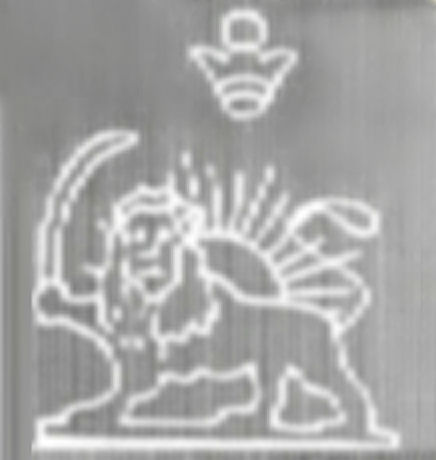 |
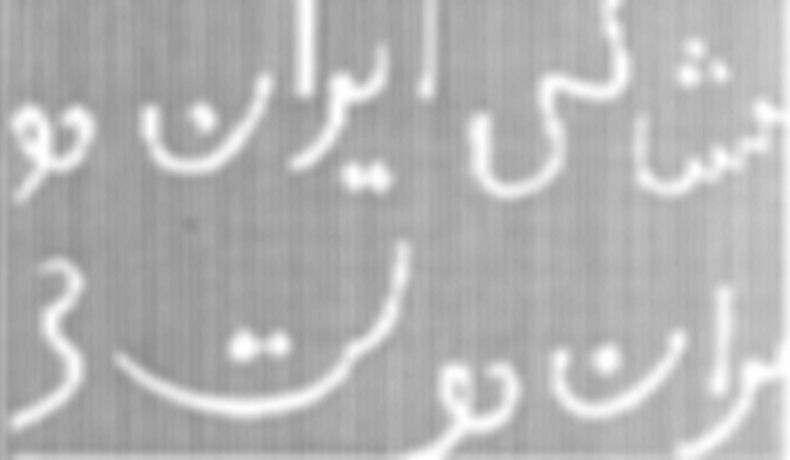 |
| Hiscocks Type W1 Watermark (Iranian watermark WM2) |
Watermark Type W2 دولت شاھنشاھى ايران (The Imperial Iranian Government) |
Watermark images adapted from the catalogue of Werner Lade.
Now shown as viewed from the front. The watermarks on all these stamps are quite large, only a portion can be seen on each stamp.
2nd issue - 1955 (August) As above but watermarked type W1. Perf. 11.
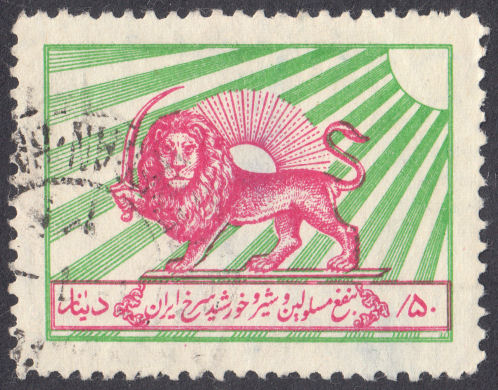 |
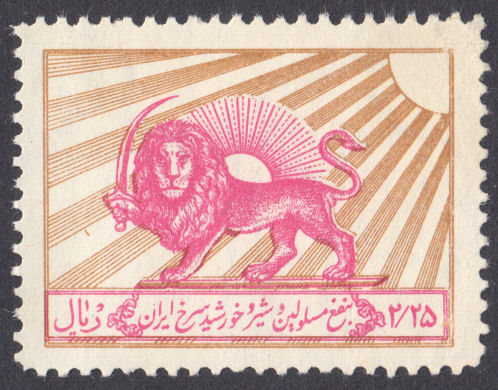 |
| RH8 - 50d /۵٠ |
RH9 - 2r.25 ٢/٢۵ |
| RH # |
Hisc. |
Type |
1955 Description |
Mint |
Used |
Used on Receipt |
| RH8 |
- |
RL1 |
50d emerald and carmine |
90.00 |
1.65 |
- |
| RH9 |
H3 |
RL1 |
2r 25 brown and carmine |
4.80 |
0.10 |
- |
| RH9a |
H3a |
|
imperf. (and displaced centre) |
- |
- |
- |
| RH9b |
H3b |
|
displaced centre |
- |
- |
- |
3rd issue - 1957 As above but watermarked type W2. Perf. 11.
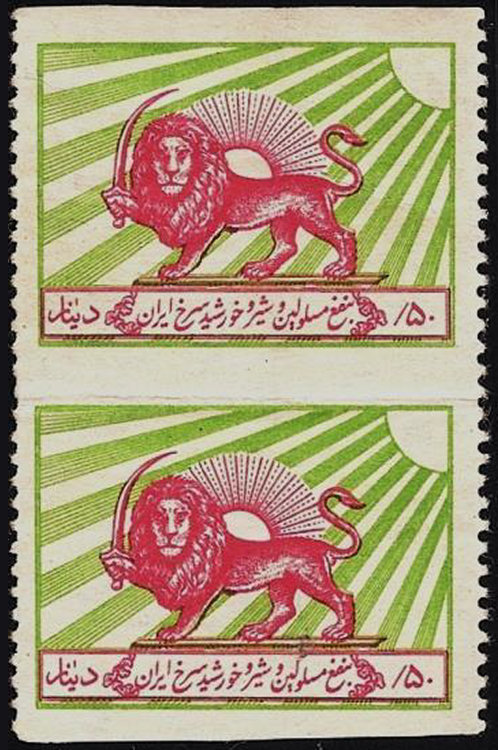 |
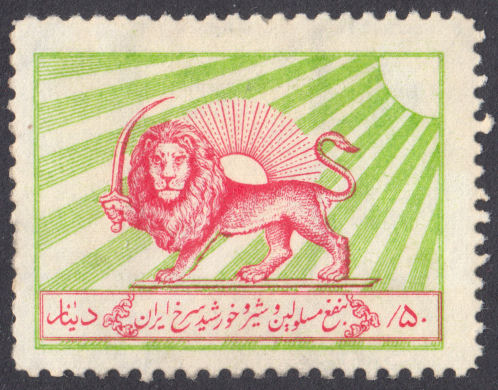 |
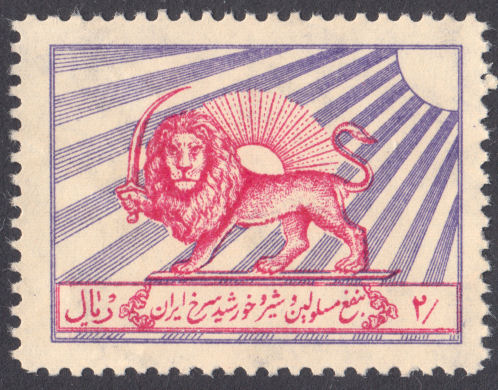 |
| RH10 - 50d /۵٠ |
RH11 - 2r ٢/ |
| |
| |
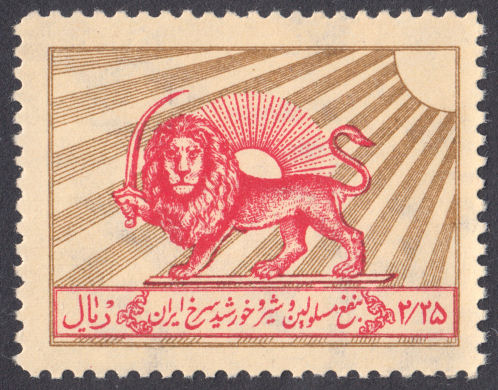 |
| RH10b - 50d /۵٠ Imperf. Horizontally. Courtesy of Werner Lade. |
|
RH12 - 2r.25 ٢/٢۵ |
| RH # |
Hisc. |
Type |
1957 Description |
Mint |
Used |
Used on Receipt |
| RH10 |
- |
RL1 |
50d green and carmine |
2.50 |
0.50 |
- |
| RH10a |
- |
RL1 |
centre inverted |
310.00 |
- |
- |
| RH10b |
- |
RL1 |
imperf. between vertical pair |
85.00 |
- |
- |
| RH11 |
- |
RL1 |
2r violet and carmine |
1.55 |
0.50 |
- |
| RH12 |
H4 |
RL1 |
2r 25 brown and red |
0.35 |
0.10 |
- |
1962 Provisional. RH12 surcharged ريال ٢/۵٠ (2.50 Real). Perf. 11.
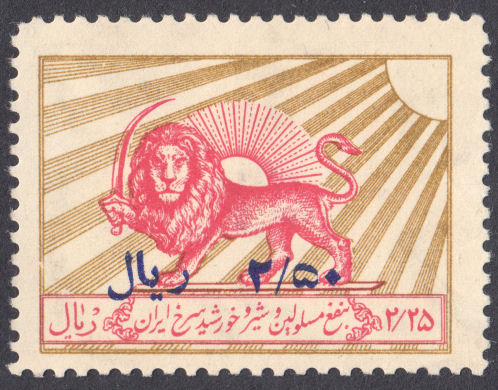 |
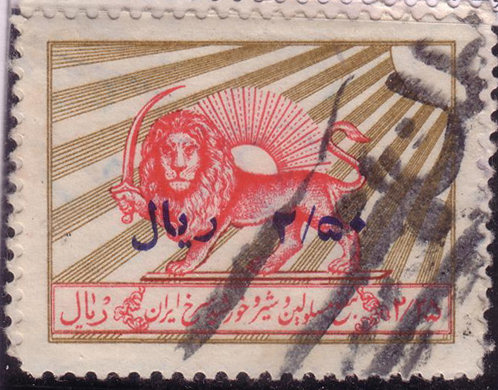 |
 |
| RH13 - 2r 50 on 2r 25 ٢/۵٠ |
RH13b - 2r 50 on 2r 25 with broken surcharge - courtesy of Rolf Lamprecht. |
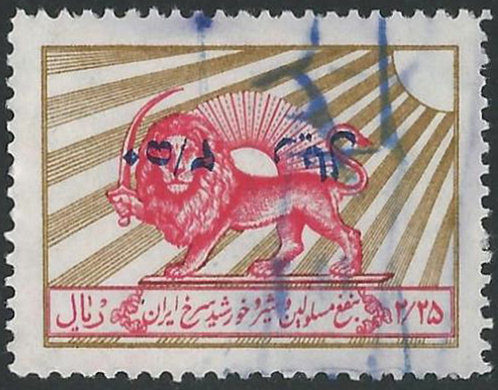 |
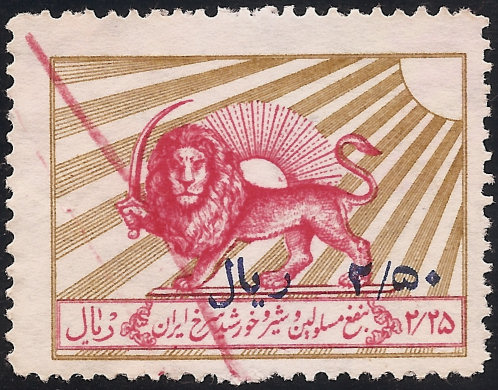 |
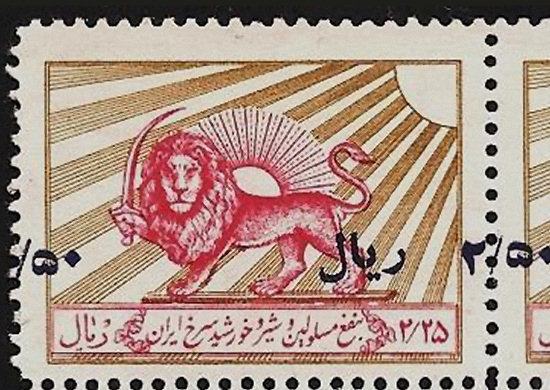 |
| RH13 - 2r 50 on 2r 25 inverted, courtesy of Werner Lade. |
RH13 - 2r 50 on 2r 25 shifted a little, and shifted a lot, courtesy of Werner Lade. The breaks can also be seen. |
Werner Lade tells me that the gap is variable, but mostly smaller than that shown. It is in multiple positions on the sheet of 100.
| RH # |
Hisc. |
Type |
1962 Description |
Mint |
Used |
Used on Receipt |
| RH13 |
H6 |
(RL1) |
2r 50 on 2r 25 brown and red (surcharge in dark blue) |
0.65 |
0.10 |
- |
| RH13a |
- |
|
overprint displaced horizontally (perf through value) |
7.75 |
- |
- |
| RH13b |
- |
|
overprint broken |
- |
- |
- |
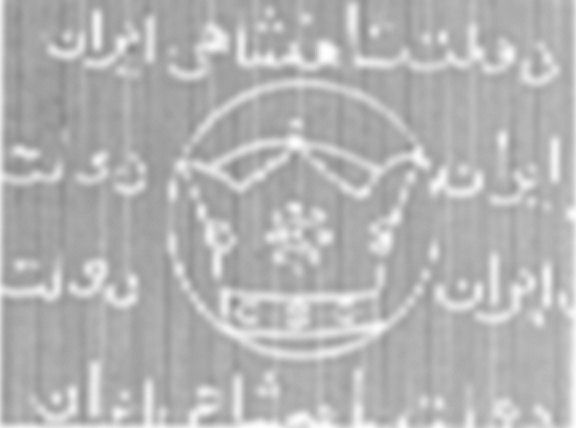 |
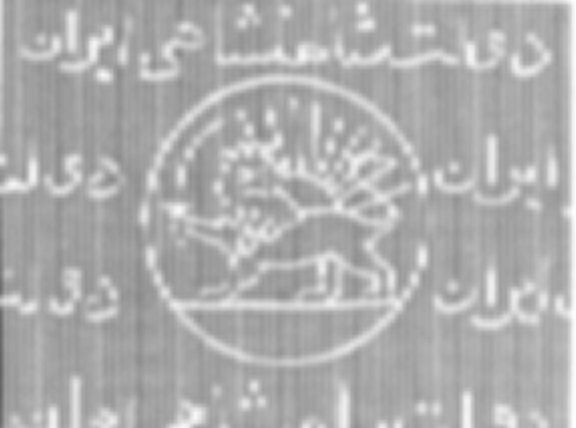 |
| Watermark Type W3 |
Watermark Type W4 |
| دولت شاھنشاھى ايران (The Imperial Iranian Government) |
Watermark images adapted from the catalogue of Werner Lade.
Now shown as viewed from the front. These two watermarks are quite similar except the centre.
It is possible to get stamps without a portion of the centre. W4 seems more common than W3.
4th issue - 1963 (October) As above but watermarked type W3. Perf. 10½.
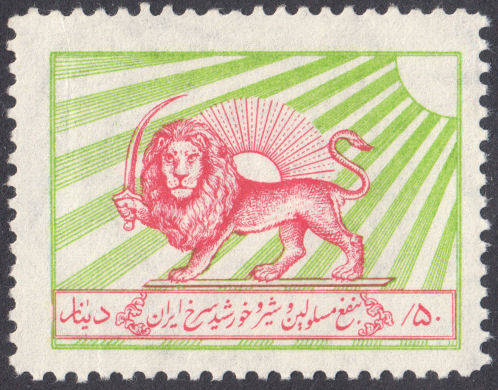 |
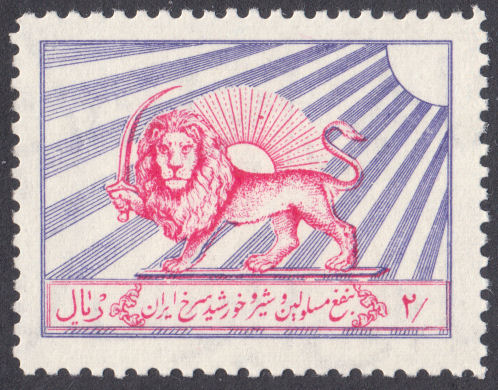 |
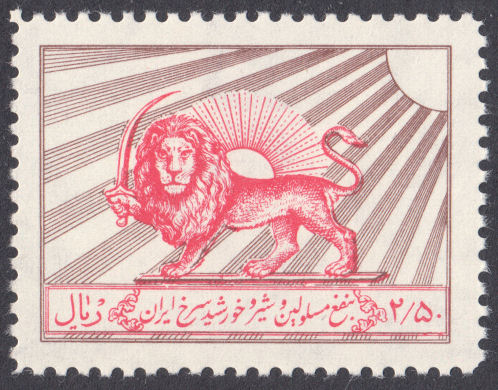 |
| RH14 - 50d /۵٠ instead of ۵٠ |
RH15 - 2r ٢/ |
RH16 - 2r.50 ٢/۵٠ |
| RH # |
Hisc. |
Type |
1963 Description |
Mint |
Used |
Used on Receipt |
| RH14 |
- |
RL1 |
50d green and carmine |
1.40 |
0.32 |
- |
| RH15 |
H8 |
RL1 |
2r violet and carmine |
1.80 |
0.35 |
- |
| RH16 |
H7 |
RL1 |
2r 50 brown and red. |
0.65 |
0.10 |
- |
5th issue - 1965-7 As above but watermarked type W4. Perf. 10½.
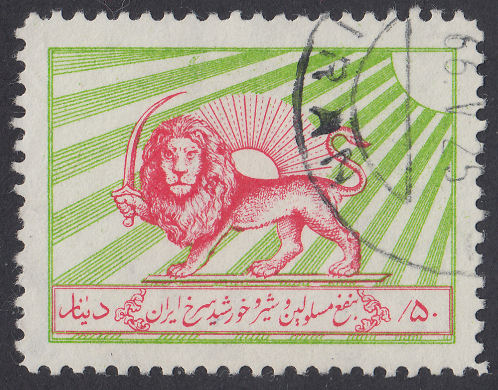 |
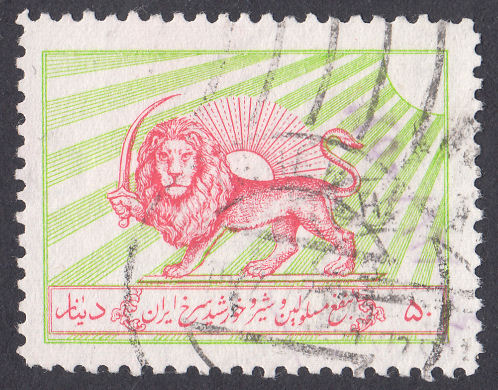 |
| Type RL1 - 50d /۵٠ instead of ۵٠ RH17 |
Type RL1b - 50d (corrected) RH18 |
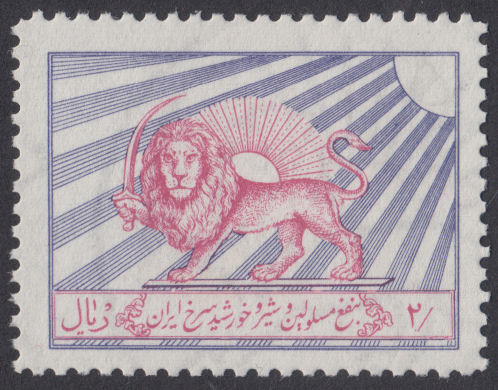 |
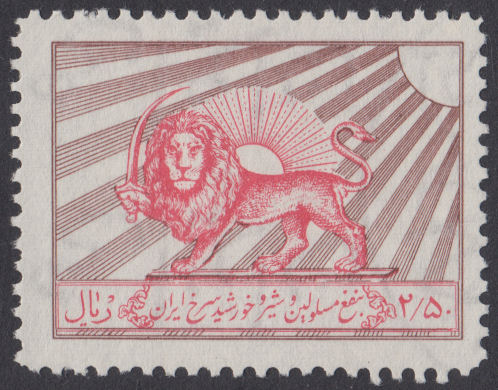 |
| RH19 - 2r ٢/ |
RH20 - 2r.25 ٢/٢۵ |
| RH # |
Hisc. |
Type |
1965-7 Description |
Mint |
Used |
Used on Receipt |
| RH17 |
- |
RL1 |
50d green and carmine (/۵٠) |
1.25 |
0.60 |
- |
| *RH17a |
- |
RL1 |
inverted watermark |
- |
- |
- |
| RH18 |
- |
RL1b |
50d green and carmine (۵٠) 1967? |
0.32 |
0.10 |
- |
| RH18a |
- |
RL1b |
imperforate bottom edge |
32.00 |
- |
- |
| RH18b |
- |
RL1b |
imperforate top edge |
42.00 |
- |
- |
| RH19 |
H9 |
RL1 |
2r grey-violet and carmine |
1.65 |
0.30 |
- |
| RH20 |
H10 |
RL1 |
2r 50 brown and red |
0.32 |
0.30 |
- |
| *RH20a |
- |
RL1 |
inverted watermark |
- |
- |
- |
| RH20b |
- |
RL1 |
horizontally imperforate |
125.00 |
- |
- |
*I have 2 examples of RH17, one of which has an inverted watermark.
I have 2 examples of RH20, both of which have inverted watermarks.
6th issue - 1976 As above. watermarked type W4 sideways, Perf. 13 x 13½. Sheets of 50.
John Barefoot points out that this is a re-drawn design with only 5 lines to each sunray.
These stamps are also noticeably larger than the earlier ones. They were used until June 1980.
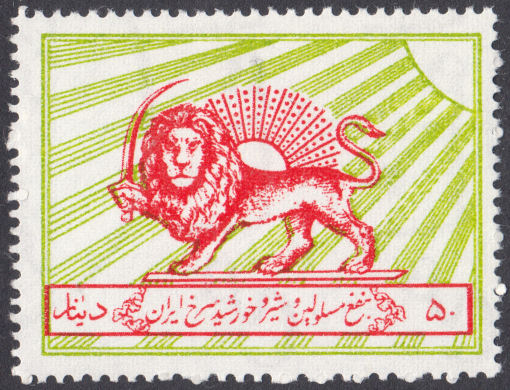 |
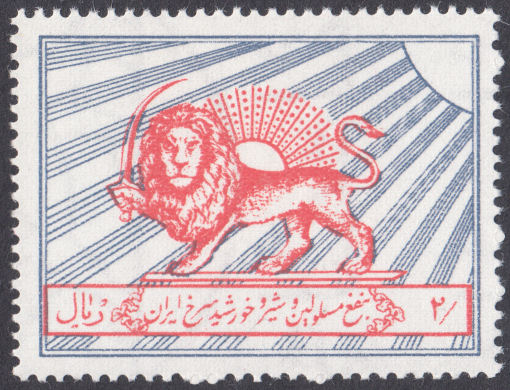 |
| RH21 - 50d ۵٠ |
RH22 - 2r ٢/ |
| RH # |
Hisc. |
Type |
1976 Description |
Mint |
Used |
Used on Receipt |
| RH21 |
- |
(RL1) |
50d olive-green and carmine |
1.50 |
0.25 |
- |
| RH21a |
- |
|
with revolutionary overprint (see below) |
- |
- |
- |
| RH22 |
H11 |
(RL1) |
2r grey-violet and carmine |
1.50 |
- |
- |
Hiscocks added the following 3 notes:
| Note 1. The date of No. 9 is uncertain. |
| Note 2. The use of these stamps was apparently discontinued in 1976. |
Note 3. The above prices are much higher than those asked in Iran.
The stamps are, however, relatively scarce outside Iran. |
My note: My updated prices are generally lower than those quoted by Hiscocks.
They reflect prices in a catalogue that I can and have bought at via a supplier with access to Iran.
They thus reflect relative scarcity. Without such access, prices 5 to 10 times these may be asked.
Last printing in 1978.
This is known with a 1979 revolutionary overprint.
The writing I am told, is "جمهورى اسلامى ايران" which is Farsi for "Islamic Republic of Iran".
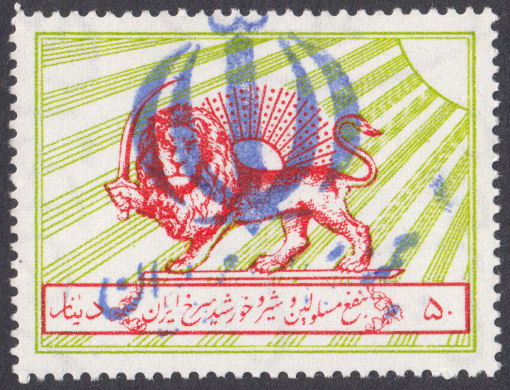
RH21a - The status is unknown.
Cancels.
Here is a sample of some cancels seen. They are shown at half my normal scale.
These are generally found on the back of receipts.
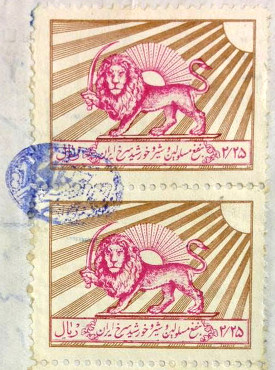 |
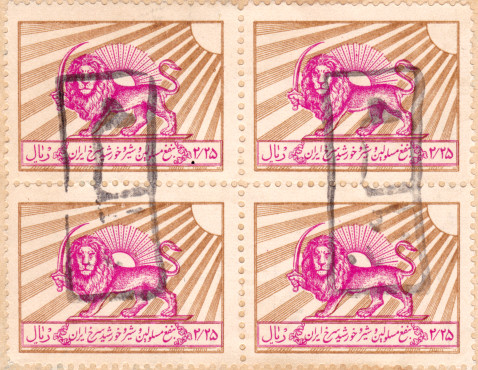 |
2r 25 brown and carmine
Courtesy of Werner Lade |
2r 25 brown and carmine. |
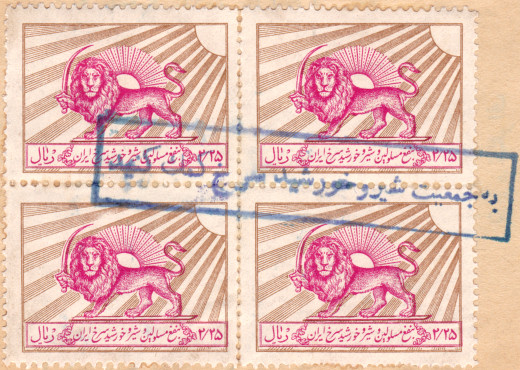 |
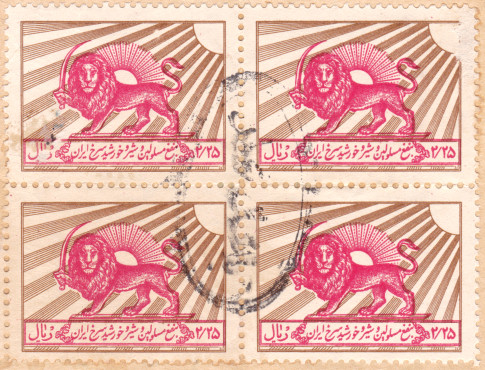 |
2r 25 brown and carmine
|
2r 25 brown and red. |
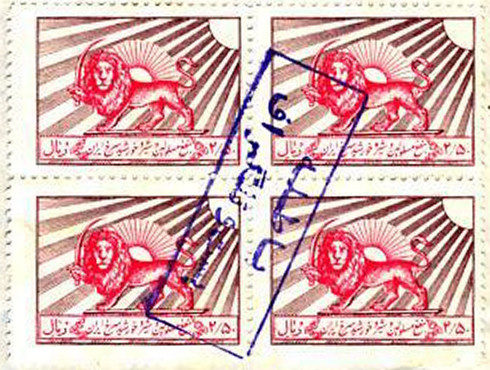 |
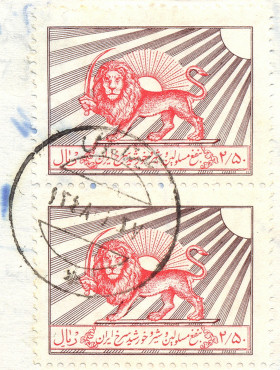 |
2r 50 brown and red
Courtesy of Werner Lade |
2r 50 brown and red
Courtesy of Rolf Lamprecht |
If anyone can provide scans or information to help with this, I am happy to give appropriate credit.
Comments, criticisms, information or suggestions are always welcome.

Please include the word 'Telegraphs' in the subject.
Last updated 16th. July. 2023
©Copyright Steve Panting 2012/13/14/15/16/17/18/19/20/21/22/23 except where stated.
Permission is hereby granted to copy material for which the copyright is owned by myself, on condition that any data is not altered and this website is given credit.


